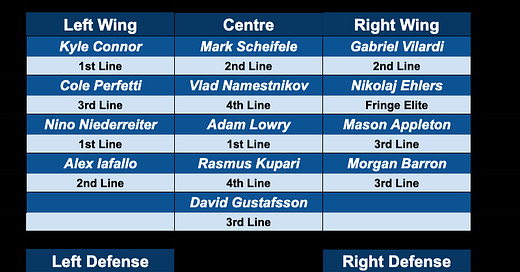Who are the Jets and what do they need to win: Part 2
We look at the Winnipeg Jets in gearing up for the trade deadline
Welcome to The Five Hohl
The best deep-dive hockey analytics blog focusing on the Winnipeg Jets. Also the worst. We’re 1/1—winner by default. Yay! (That’s what we said last time.)
Originally, this was going to be one article, but it got reaaaaaally long. So, this is part one of what could be a three- or four-part series. The next installment(s) will cover…
Keep reading with a 7-day free trial
Subscribe to The Five Hohl to keep reading this post and get 7 days of free access to the full post archives.


